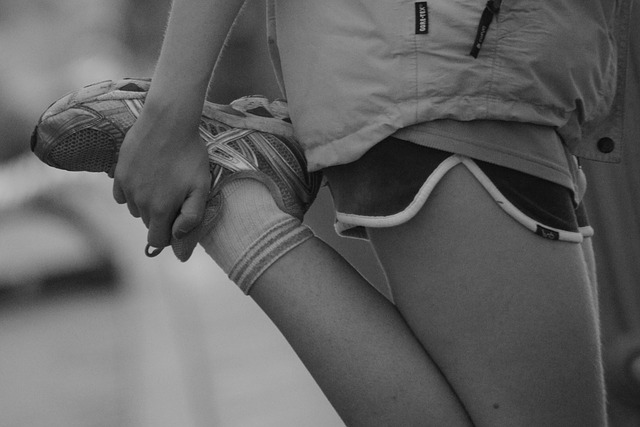I have to say, I think running is one of my favourite ways to keep healthy. Unfortunately, for me anyway, it is also one of those things I struggle to do. The older I get, the more I find excuses to not get out. But I will state it here – this is one of the things that I am going to work on this year – I am going to start to run, again.
You’ll see I said again. It’s not always been such an issue for me. When I was in my late teens I was a runner. Well, more of a jogger really. I wasn’t fast enough to classify myself as a runner, ha ha!
Looking back, I remember the races I did with my friend Steve. We would jump in the work’s van on a Sunday and shoot off early in the morning to various races across the South East of England. 5k, 10k, 10 miles, half marathons. We loved them all. But Steve was almost always quicker than me!
Running is something that almost everyone can do, but that doesn’t make it easy, as I keep finding out now as, 30 years later, I struggle out the door! Therefore, here are seven tips on how to break into the sport of running. Why not join me in my re-discovered running journey.
Warm up and cool down
As a beginner, this is extremely important, however, commonly overlooked. Make sure you are stretching and three minutes of walking before, and the same amount of both afterwards. It will not only make your present run more enjoyable, but will better prepare your body for the next one. And recovery is all important when you start out, especially. If you feel bad after every run, you will be less keen to get out there next time.

Starting out
To start with, choose a flat paved path and walk 30 minutes per day for several days. Do this for three weeks before actually starting to run. This will toughen up your ankles and knees so that they get used to the additional stress. If you are like me and don’t get as much exercise as you should, you’ll feel the benefits greatly, rather than feeling it in your joints!
Gradually start to include running into your program at the rate of 15 to 60 seconds of running every two to four minutes of walking. As your body adapts, start running more and walking less until you are exclusively running.
Minimise injury and discomfort
Not having the proper footwear or trying to run too soon on an uneven surface is a recipe for injury. Before running, be sure to get fitted with a good pair of running shoes preferably, from a running store. Avoid buying online as they may not fit properly. I am lucky that I have a shop dedicated to running quite close by. If you are buying from a general sports shop, ask if there is a sales assistant that runs to help with your enquiries – you will benefit from their expertise, and they may be able to advise on routes or local clubs.
Women should invest in a sports bra made for running that gives them good support regardless of their breast size. For both men and women, purchase running tops made from a good wicking material. Check the seams and make sure they are covered; otherwise it can cause painful chafing.
Only once when I was running did I suffer from the dreaded joggers nipple! And that is so uncomfortable! A good blob of Vaseline helps with this!
The talk test
To know if you are running at the right speed, use the talk test. While running, you should be able to carry on a broken conversation or recite the Lord’s Prayer if running alone. If you can’t, then you are running too hard. Slow down! (It doesn’t have to be the Lord’s Prayer, you could try the National Anthem, the words from your favourite pop song, or even items off your grocery shopping, but I hope you get the gist).
Looking back to those teenage races, I remember seeing a friend once. Lisa worked with my sister, and was sporty – she played hockey and cricket, and was England’s wicket keeper. So as I came across her, half-way up a mile-long hill, I said hi, asked her how she was getting on. All she could manage to do was say she couldn’t talk, and to go on without her. This is the state you are trying to avoid! I think she’d set off to quick and was struggling up Fordcombe Hill.
Mix in other sports and fitness activities
Running is a great sport, but if that is all you do, the constant repetitive action takes its toll on your lower body. Mix in some other activities such as yoga, Pilates, cycling, swimming, etc. Not only does it give you some variety and prevent boredom, but it uses other muscles and joints and takes some of the pressure off the ones you use when running. Some of these will also help with stretching, which as we have seen will aid recovery.

Set a goal – or goals
You don’t have to enter races. I sure don’t plan to. But you need a reason to get out there, otherwise you be too easily tempted to miss a day, which will then easily turn into several days, a week, two weeks… You need to be able to mark your progress, otherwise you can soon lose interest. Make your goal something definitive, such as reducing your run time by a certain number of minutes or increasing your distance each week.
Track your progress using something as simple as a stopwatch or one of the new fitness trackers which measures more than just time. These trackers can tell you so much, such as heart rate and calories burned.
Run with a friend or friends
Running alone is good, but running with others can benefit you so much. Not only will it give you someone to talk to, but you will be able to monitor each other, encourage each other, and just benefit from a joint journey.
Let me tell you of another reason, from my own experience back in 1989. I had entered and been accepted into the London Marathon. It was my dream come true, but I knew I had many months of hard training ahead of me, through the cold winter months.
I was happy to get an entry, and shared this with my work colleagues. One of them asked me if I would be kind enough to train with her daughter, who had entered in an effort to lose weight! She wasn’t a runner, and so needed some guidance.
We met up, and it was obviously going to be hard. To start with, I was running 13 miles at this time, and stood a full foot in height taller. Our stride patterns were way out, our experiences were different, and our motivation different. But together we trained through the winter, meeting at least twice a week, as well as doing other runs on our own.
There was one thing that I will always be grateful for. And that was the fact that running with Jan actually forced me out on nights that I would have rather been sitting at home. There were nights that were cold, dark, and miserable, but as we had arranged to go out, I always headed off to Jan’s flat. We would run, and then as I dropped her back home, she would admit that she really hadn’t wanted to go either!
Having a running partner, or partners, will keep you accountable, will help you stay motivated, and perhaps keep you on track when it is easier to take the easy option and stay at home.
I hope these tips help you in your early days of starting to run. I’ll let you know how I get on, and would love to hear how you get on too.
